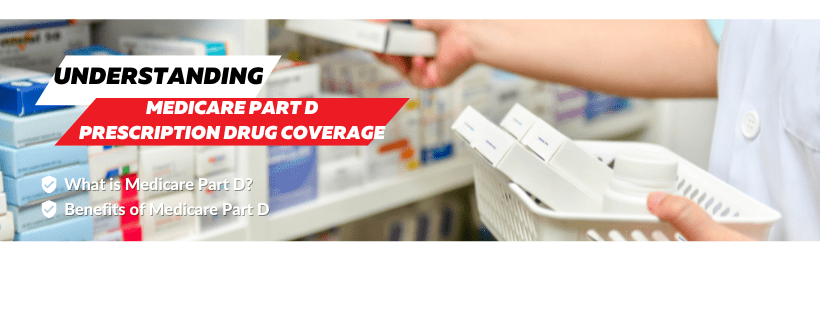Understanding Medicare Part D Prescription Drug Plan


Understanding Medicare Part D Prescription Drug Plan Podcast
Managing your prescription drug costs is an essential part of your healthcare plan, and Medicare Part D can help with that. However, navigating the details of Part D coverage can be confusing, especially with the changes happening in 2025. Medicare Part D, the prescription drug coverage component of Medicare, was introduced to help reduce the cost of medications for beneficiaries, but it requires careful consideration when selecting the right plan.
In this blog, we’ll explain what Medicare Part D is, explore its benefits, and highlight important factors to keep in mind when selecting a plan. We will also address some changes in how local agencies, including Bancorp Insurance and most insurance agencies in Central Oregon, handle Medicare Prescription Drug Plans.
What Is Medicare Part D?
Medicare Part D is designed to help Medicare beneficiaries pay for prescription drugs. This coverage is provided through private insurance companies that are approved by Medicare. There are two main ways you can get Part D coverage:
Standalone Part D plan: This option works alongside Original Medicare (Parts A and B) to provide drug coverage.
Medicare Advantage plan with prescription drug coverage: Many Medicare Advantage plans (Part C) bundle drug coverage with medical and hospital services.
Medicare Part D plans are built around formularies, which are lists of covered medications. Each plan’s formulary is structured into tiers, with lower tiers typically including generic drugs that are less expensive, and higher tiers covering brand-name and specialty drugs.
The Basics of Medicare Part D Coverage
Medicare Part D follows a four-stage coverage system that determines how much you pay for your prescriptions throughout the year:
Deductible Stage: You pay the full cost of your medications until you meet your plan’s deductible (if your plan has one).
Initial Coverage Stage: After the deductible, your plan will share the cost of your prescriptions. This includes co-pays or co-insurance, depending on the drug’s tier.
*NEW 2025* Maximum Out of Pocket: After you have paid $2,000 toward prescription drug cost in one calendar year, all cost will be paid by your Part D plan.
Changes in How Medicare Prescription Drug Plans Are Serviced in Central Oregon
As of this year, Bancorp Insurance and most insurance agencies in Central Oregon no longer service Stand Alone Medicare Prescription Drug Plans. While we understand that this may raise concerns for those who rely on these plans, we are still here to provide you with education and guidance. To help you better understand your options and navigate upcoming changes in 2025, we are hosting local events titled “Medicare Part D Prescription Drug Coverage – Changes in 2025 and How to Shop” in La Pine, OR. These events will be held on:
We encourage you to Click the date above to register and hold your spot. Space is extremely limited, and these events are expected to fill up quickly.
Can’t make one of the in person sessions? You can take the training online for free. Just click here to learn more.
Benefits of Medicare Part D
Despite the changes in local servicing, Medicare Part D continues to offer several important benefits for managing prescription drug costs.
1. Lower Prescription Costs
Without Medicare Part D, you could be responsible for paying the full price of your medications, which can be prohibitively expensive. With Part D, you can access reduced prices for both brand-name and generic medications. Even if you currently take few or no medications, enrolling in a Part D plan provides a safety net should your health needs change.
2. Comprehensive Formulary Coverage
Most Medicare Part D plans cover a wide range of prescription drugs, categorized into tiers. Each tier comes with a different co-pay or co-insurance level, making it essential to select a plan that covers your specific medications at an affordable rate. This formulary flexibility is one of the key benefits of Part D coverage.
3. Coverage for Preventive Medications
If you don’t enroll in a Medicare Part D plan when you’re first eligible and don’t have other creditable prescription drug coverage, you may face a late enrollment penalty. This penalty is added to your monthly premium and continues for as long as you have Part D coverage.
Final Thoughts: Stay Informed About Medicare Part D Changes
Navigating Medicare Part D prescription drug plans can be overwhelming, but understanding your options and the changes coming in 2025 is critical for your healthcare needs.
While Bancorp Insurance and most agencies in Central Oregon no longer service Medicare Prescription Drug Plans, you don’t have to navigate these changes alone. Join us at one of our upcoming events in La Pine to learn about the 2025 changes and how to shop for the best plan. Click the date above to register for one of our events on October 25th, November 7th, or November 22nd. Space is extremely limited, so act quickly to secure your spot.
Bancorp’s insurance agents are available to provide you with a free review and consultation. Contact Us – Bancorp Insurance Call 800-452-6826



